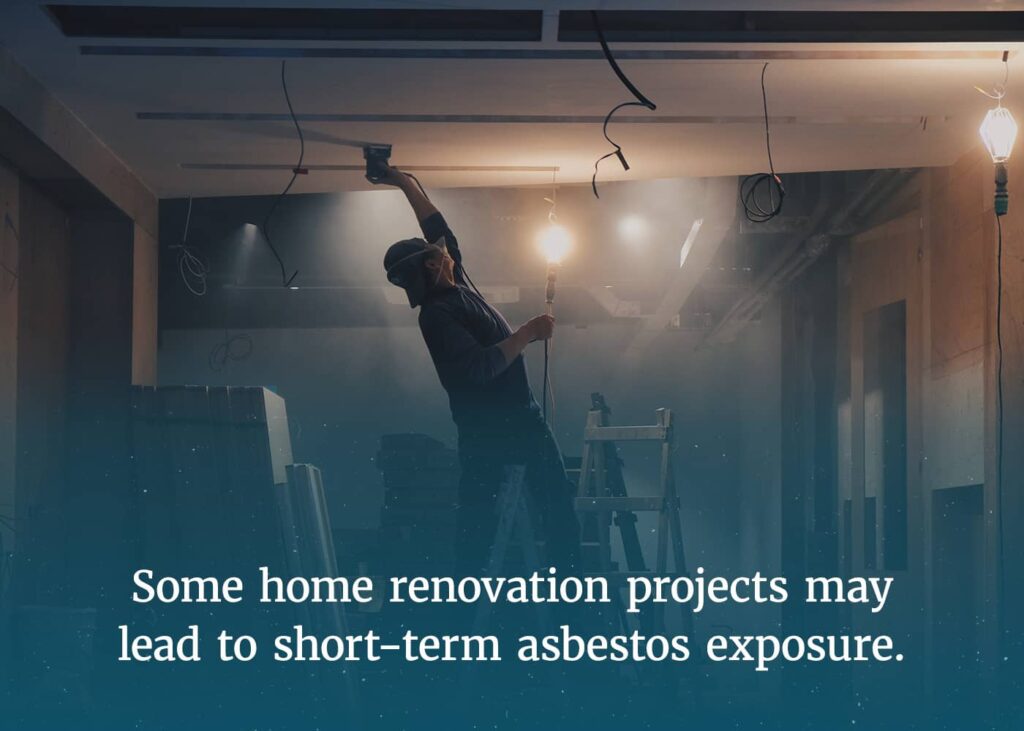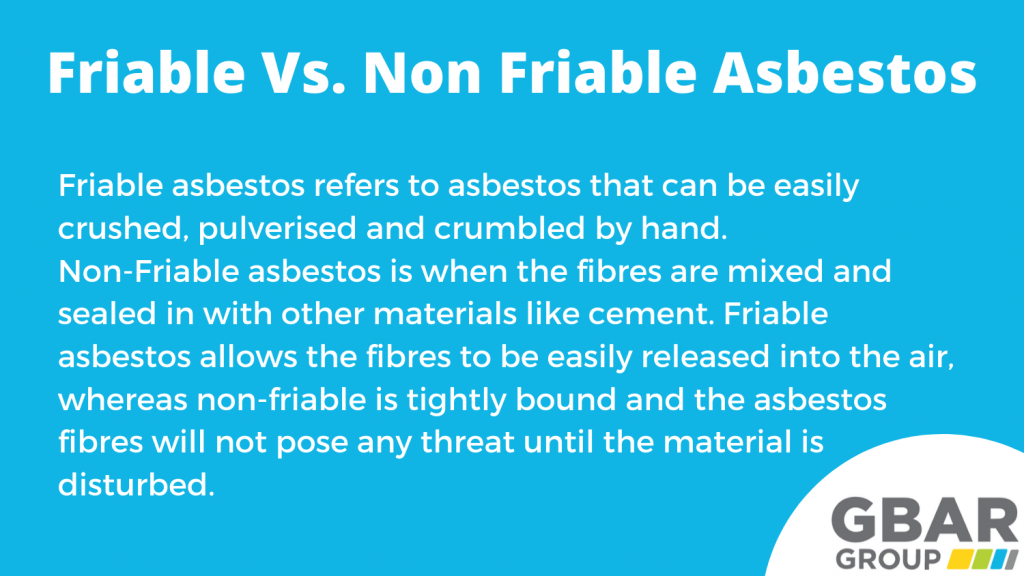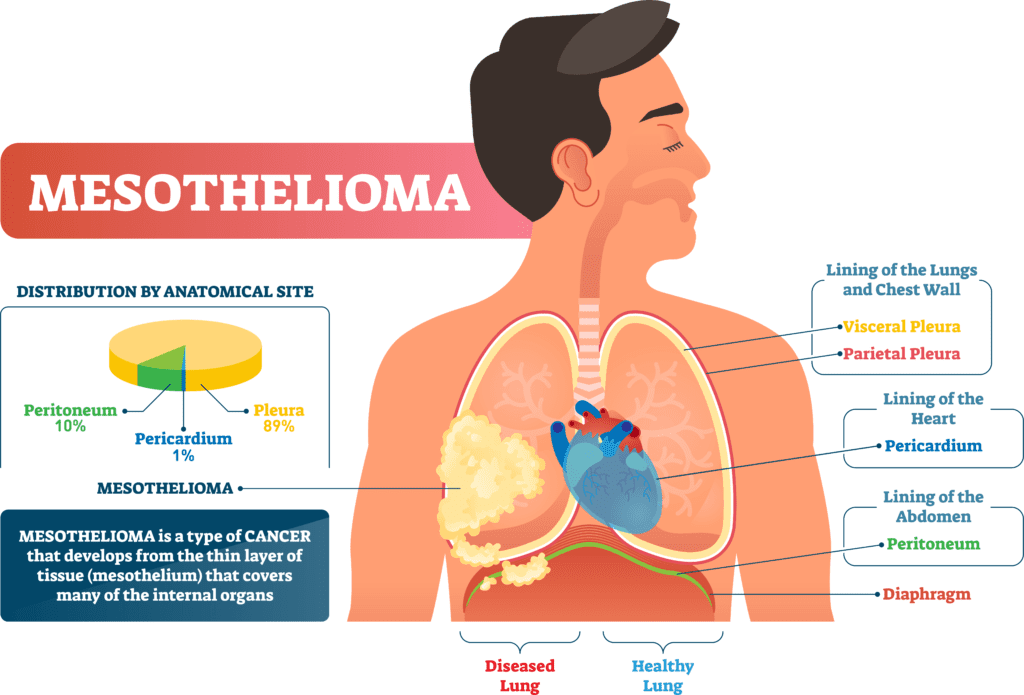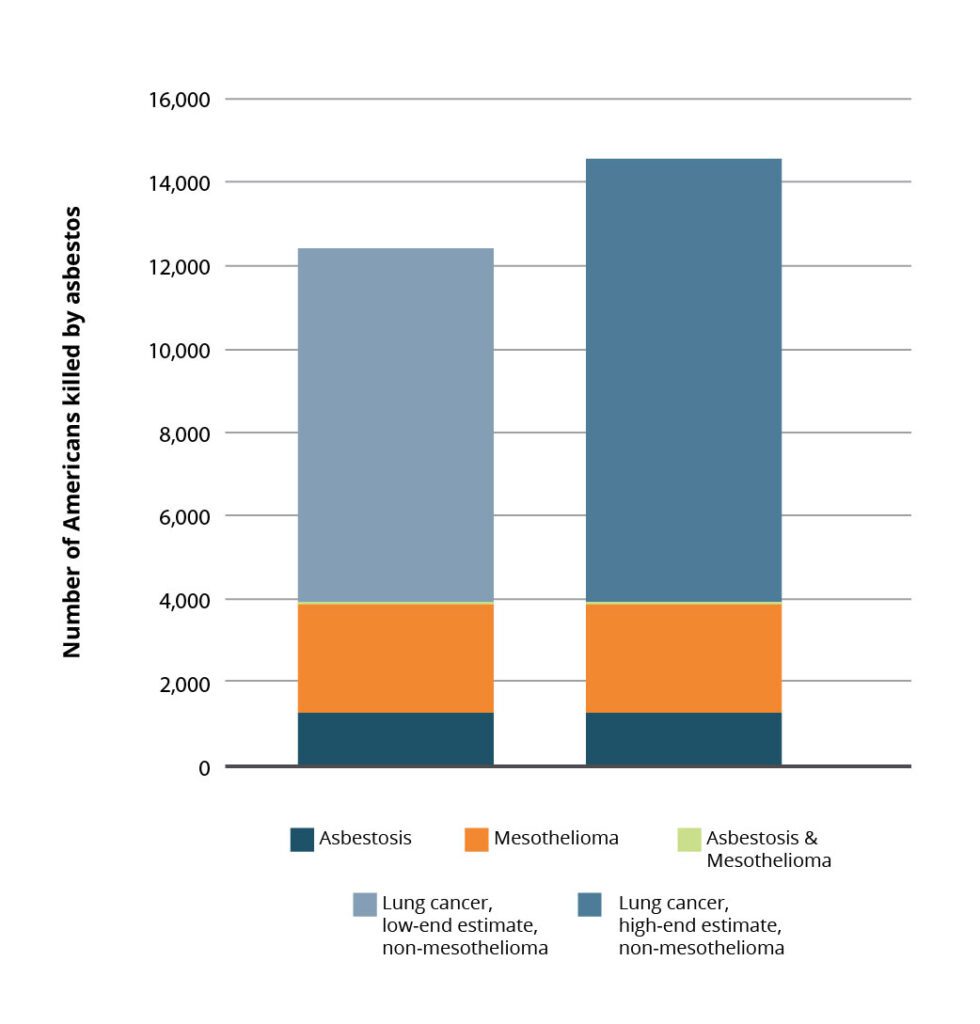Imagine this scenario: You’re working on a home renovation project, tearing down walls and unknowingly releasing a hidden danger into the air – asbestos. You may have heard about the dangers of asbestos exposure, but just how serious is one-time exposure? In this article, we will explore the potential risks and long-term effects of asbestos exposure, shedding light on this often misunderstood and underestimated threat to our health. So, if you’ve ever wondered about the severity of one-time asbestos exposure, join us as we uncover the facts and empower you with knowledge to protect yourself and your loved ones.


Understanding Asbestos
What is asbestos?
Asbestos is a naturally occurring mineral that was widely used in industries such as construction, manufacturing, and automotive until its ban in the late 20th century. It is known for its heat-resistant properties, durability, and insulating capabilities. Asbestos can be found in various forms, including chrysotile, amosite, crocidolite, tremolite, anthophyllite, and actinolite.
Uses of asbestos
Due to its desirable properties, asbestos was used in a wide range of products, including insulation, roofing materials, cement, textiles, and automotive parts. Its heat resistance made it ideal for insulating buildings and machinery, and its durability made it a common component in roofing materials. Asbestos was also widely used in brake pads, clutch facings, and gaskets in the automotive industry. However, once the health risks associated with asbestos were discovered, its use in most applications was phased out.
Health risks of asbestos exposure
Asbestos has been linked to various health risks, particularly when its fibers are released into the air and subsequently inhaled or ingested. Prolonged exposure to asbestos can lead to serious health conditions, including lung cancer, mesothelioma, and asbestosis. These diseases often have long latency periods, meaning they may not manifest until decades after the initial exposure. Asbestos fibers can become trapped in the lungs or other organs, causing inflammation, tissue scarring, and potentially cancerous cell growth.
One Time Asbestos Exposure: An Overview
Defining one time asbestos exposure
One time asbestos exposure refers to a situation where an individual comes into contact with asbestos fibers on a single occasion. Unlike occupational exposure, where individuals may be regularly exposed to asbestos in their workplace, one time exposure typically occurs in non-occupational settings, such as during home renovations or DIY projects. While the duration of exposure may be brief, even a single incident of asbestos exposure can have significant health implications.
Sources of one time asbestos exposure
One time asbestos exposure can occur from various sources, often unknowingly. Older buildings, particularly those constructed before the 1980s, may contain asbestos-containing materials (ACMs) that can release fibers when disturbed. Common sources of asbestos exposure include asbestos insulation, popcorn ceilings, asbestos cement, vinyl floor tiles, and pipe insulation. It is important to be aware of potential ACMs and take necessary precautions to avoid disturbing them.
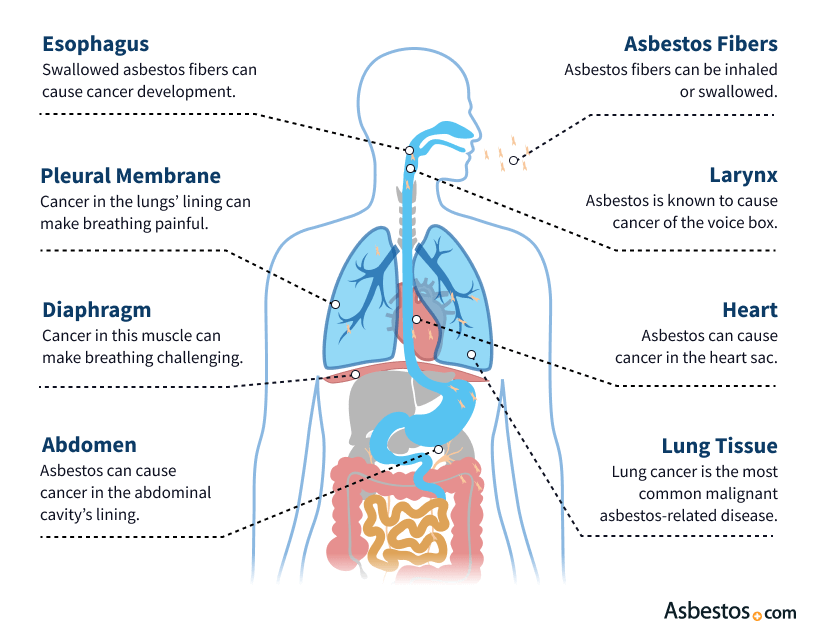

Health Effects of Asbestos Exposure
Short-term health effects
Short-term health effects of asbestos exposure may not be immediately apparent, as they often develop over time. However, individuals may experience symptoms such as coughing, wheezing, shortness of breath, chest pain, and fatigue. These symptoms can be similar to those of other respiratory conditions, making it important to consider potential asbestos exposure when seeking medical attention.
Long-term health effects
The long-term effects of asbestos exposure can be severe and life-threatening. The most serious health conditions associated with asbestos exposure are lung cancer, mesothelioma, and asbestosis. Lung cancer commonly develops in individuals who have a history of asbestos exposure, especially if they also smoke. Mesothelioma is a rare form of cancer that primarily affects the lining of the lungs, abdomen, or heart. Asbestosis is a chronic lung disease characterized by scarring and inflammation of lung tissue, which can cause shortness of breath and respiratory difficulties.
Asbestos-related diseases
Asbestos-related diseases can have a significant impact on individuals and their families. Mesothelioma and lung cancer are often diagnosed in advanced stages, making treatment challenging and reducing life expectancy. Asbestosis can significantly impair lung function, leading to a decreased quality of life and increased risk of respiratory infections. These diseases not only cause physical suffering but also emotional and financial burden.
Factors Affecting the Severity of Exposure
Duration and intensity of exposure
The severity of asbestos exposure is influenced by the duration and intensity of the exposure. Prolonged exposure to high concentrations of asbestos fibers increases the risk of developing asbestos-related diseases. However, even brief exposure to high levels of asbestos can be detrimental to health. It is important to minimize asbestos exposure whenever possible, regardless of the duration or intensity.
Type or form of asbestos
Different types of asbestos fibers have varying levels of toxicity and may pose different health risks. For example, amphibole asbestos fibers, including amosite and crocidolite, are considered more hazardous than chrysotile asbestos fibers. The length, size, and durability of asbestos fibers also play a role in their ability to penetrate lung tissue and cause damage. All forms of asbestos are considered carcinogenic, and exposure to any type should be avoided.
Individual susceptibility
Individual susceptibility to asbestos-related diseases can vary depending on various factors, such as age, overall health, and genetic predisposition. Some individuals may be more susceptible to the harmful effects of asbestos exposure due to genetic factors or pre-existing respiratory conditions. Additionally, long-term exposure to other risk factors, such as smoking, may increase the likelihood of developing asbestos-related diseases.


Immediate Actions after Exposure
Seeking medical attention
If you suspect you have been exposed to asbestos, it is crucial to seek medical attention, even if you are not experiencing immediate symptoms. A healthcare professional can assess the level of exposure and provide guidance on further actions. Inform the medical professional about the potential asbestos exposure to ensure appropriate evaluation and monitoring.
Medical examination and diagnosis
Following asbestos exposure, a medical examination and diagnosis are essential to assess any potential health effects and monitor the individual’s condition. Diagnostic tests, such as chest X-rays, CT scans, and pulmonary function tests, may be performed to evaluate lung health and identify any abnormalities. Early detection and diagnosis of asbestos-related diseases can contribute to more effective treatment options and improved outcomes.
Management and Treatment of Asbestos Exposure
Medical management options
The management and treatment of asbestos exposure largely depend on the individual’s specific circumstances and health condition. Treatment options may include medication to alleviate symptoms, such as anti-inflammatory drugs or bronchodilators. In more severe cases, specialized treatments like oxygen therapy or surgical interventions may be necessary. It is essential to consult with healthcare professionals who specialize in asbestos-related diseases for appropriate management and treatment.
Supportive therapies
Aside from medical interventions, individuals affected by asbestos exposure may benefit from supportive therapies to improve their overall well-being and quality of life. These therapies can include pulmonary rehabilitation programs, counseling services, and support groups. Support from healthcare professionals, family, and friends can play a crucial role in coping with the physical and emotional challenges associated with asbestos-related diseases.
Preventive measures
Preventive measures are crucial to minimize the impact of asbestos exposure. It is important to identify and avoid asbestos-containing materials (ACMs) and follow safe handling practices if working in an environment where asbestos is present. Regular check-ups and monitoring are necessary for those who have been exposed to asbestos to detect any potential health problems early on. Additionally, maintaining a healthy lifestyle and avoiding other respiratory irritants, such as smoking, can help reduce the risk of developing asbestos-related diseases.
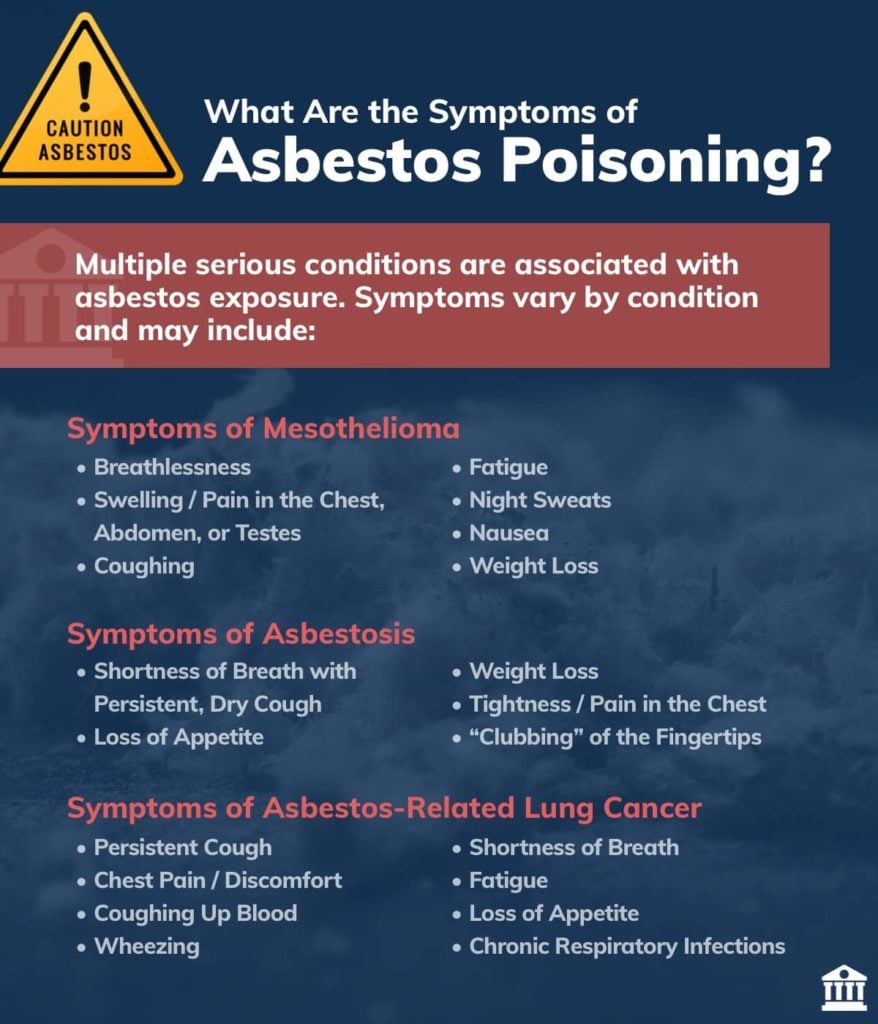

Legal Implications and Compensation
Workplace safety regulations
Workplace safety regulations and guidelines aim to protect workers from asbestos exposure. Employers are responsible for providing a safe working environment and ensuring appropriate measures are in place to prevent asbestos exposure. This includes proper asbestos management, regular inspections, and employee training on safe handling practices. Failure to comply with these regulations can result in legal consequences for employers.
Workers’ compensation
Employees who develop asbestos-related diseases due to occupational exposure may be entitled to workers’ compensation benefits. Workers’ compensation is a form of insurance that provides medical expenses, lost wages, rehabilitation, and disability benefits to employees injured in the course of their employment. The specific requirements and compensation options vary depending on the jurisdiction and legal framework.
Legal remedies for asbestos victims
Individuals who suffer from asbestos-related diseases due to non-occupational exposure may seek legal remedies. Legal remedies can include filing personal injury claims against responsible parties, such as manufacturers or property owners who failed to disclose the presence of asbestos. Compensation through legal channels can help cover medical expenses, lost wages, pain, and suffering associated with asbestos-related diseases.
Preventing Asbestos Exposure
Identifying asbestos-containing materials (ACMs)
To prevent asbestos exposure, it is crucial to identify and manage asbestos-containing materials (ACMs) properly. Engaging professionals to conduct asbestos inspections and surveys in older buildings can help determine the presence of ACMs. Proper asbestos testing should be conducted before any renovation or demolition work to ensure necessary precautions are taken. Do not disturb or attempt to remove ACMs yourself without proper training and protective equipment.
Safe handling and removal of ACMs
If asbestos-containing materials need to be removed, it is essential to follow proper safety protocols to minimize the risk of fiber release. Engaging licensed asbestos removal professionals ensures compliance with safety regulations and reduces the potential for exposure. These professionals have the necessary expertise and equipment to safely handle and dispose of ACMs while minimizing the risk to themselves and others.
Occupational safety guidelines
Occupational safety guidelines are in place to protect workers who may come into contact with asbestos or asbestos-containing materials during their job. Employers should provide appropriate training and education to employees on asbestos awareness and safe handling practices. Personal protective equipment (PPE), such as respirators and protective clothing, should be provided to minimize the risk of exposure. Regular monitoring and risk assessment should be conducted to ensure compliance with safety guidelines.
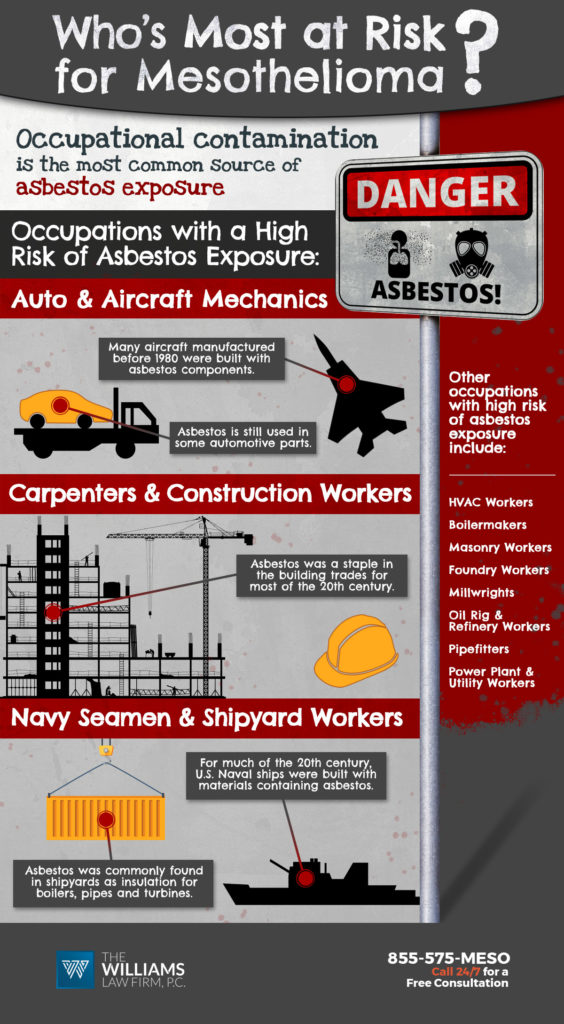

Raising Awareness and Education
Public education programs
Public education programs play a crucial role in raising awareness about the dangers of asbestos and promoting preventive measures. These programs can target the general public, homeowners, and individuals working in high-risk industries. By providing information on the risks of asbestos exposure, the importance of proper handling, and the availability of resources for testing and removal, public education programs contribute to the overall reduction of asbestos-related diseases.
Training for at-risk industries
Industries with a higher risk of asbestos exposure, such as construction, demolition, and asbestos removal, should provide comprehensive training programs to their employees. These programs should include education on identifying ACMs, safe handling practices, proper use of personal protective equipment, and the importance of regular health monitoring. By equipping workers with the necessary knowledge and skills, at-risk industries can minimize the risk of asbestos exposure and protect their employees’ health.
Community outreach initiatives
Community outreach initiatives can help reach individuals who may be at risk of asbestos exposure, such as homeowners, DIY enthusiasts, and individuals living in older buildings. These initiatives can include workshops, informational materials, and partnerships with local organizations to promote safe handling practices and educate the community about the risks associated with asbestos. By fostering a culture of awareness and responsibility, community outreach initiatives contribute to the prevention of asbestos-related diseases.
Conclusion
Understanding the seriousness of one time asbestos exposure is crucial for ensuring the health and well-being of individuals. While one time exposure may seem insignificant compared to prolonged occupational exposure, it can still lead to severe health conditions. Recognizing the potential sources of asbestos exposure and taking preventive measures are key in minimizing the risks. Early intervention through seeking medical attention, medical management, and supportive therapies can improve outcomes for those affected by asbestos exposure. Raising awareness, implementing workplace safety regulations, and providing legal remedies and compensation for victims contribute to preventing future asbestos-related diseases. By prioritizing preventive measures and early intervention, we can protect ourselves and our communities from the hazards of asbestos exposure.

